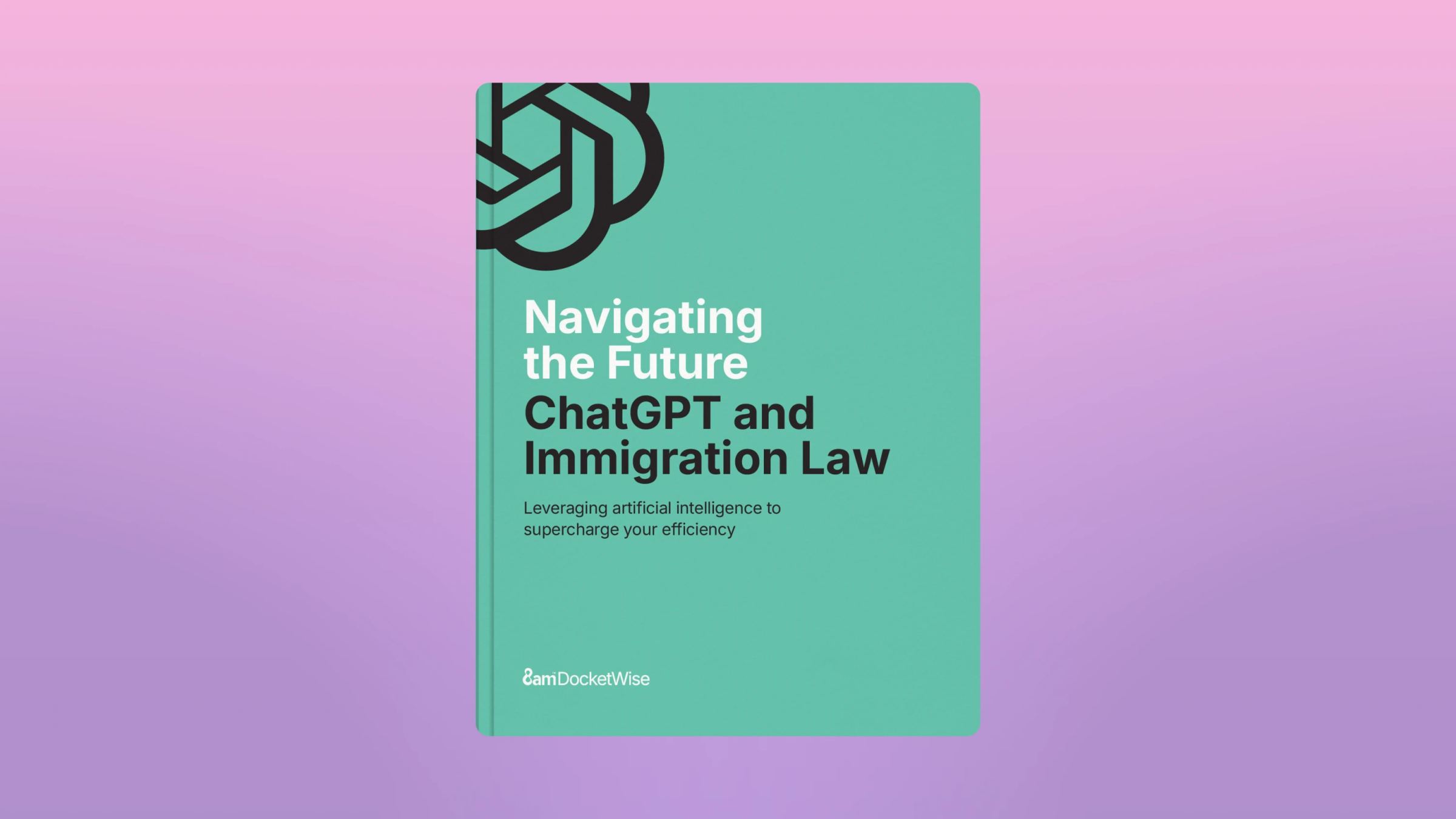Immigration law firms almost always need to use multiple tools to truly optimize and automate their workflows, and having these tools communicate with one another is one of the best ways to achieve automation. Fortunately, technology has moved in the direction of building the necessary bridges between platforms that allows you to integrate and have one system “talk” to another.
If this sounds overwhelming, don’t fret. Integrating and connecting various tools doesn’t have to be hard, and the most important first step is to figure out what integrations are important for you and your practice before actually implementing them. So, in this article we’ll go over some of the various tools and platforms that immigration law firms should consider integrating into their “tech stack” (more on what that means below) and how to approach integrating them as you automate more of your law firm’s processes.
Let’s dive in.
Legal tech integrations: very important, and simpler than you think
In simple terms, integrations are what allows two different softwares to talk to each other. The more technical name — API, or Application Programming Interface — is a set of protocols created to establish how one platform talks to another and how they will interact and show information to you within each platform’s user interface.
For example, an integration between your immigration case management system and Microsoft Outlook means that you can create an event in your case management tool and it will automatically add it to your Outlook calendar. Without an integration, you have to create that event twice: once in your tool to track it, and another time in your calendar to actually remind you. So integrations are hugely important to save you time and avoid confusion or error that may stem from manual, data entry in multiple systems. Ultimately, integrations are there to help you get the most out of your tech stack and streamline as much of it as possible.
The next foundational question is, “what is a ‘tech stack?’”
A tech stack, or technology stack, is a term that basically encompasses all the different tools and technologies a company uses to get work done on a daily basis. For law firms, this likely means some combination of a case and immigration forms management platform, a billing system, a project management tool, etc.
So if someone asks you what tools you have in your tech stack, you might mention your email client, your billing system, your case management system, and whatever other tech you use to do your work.
We’ve gone over general tools and tech that are useful for immigration lawyers in a prior article, so now let’s dive into what software platforms you should consider for your practice that you can integrate with your immigration case management system as the main “source of truth” for your firm.
Here are a few types of tools to consider when planning your immigration law firm tech stack
The most important question to ask is: what tools do you need to get your work done? While there isn’t one perfect list for every firm, here are a few categories of tools you should consider when thinking about your law firm’s tech stack:
Immigration case and forms management software: We’re starting here because this is one of the most important to have an efficient law firm. This type of tool will help you manage your immigration cases, fill out immigration forms, send client questionnaires, track case progress, send follow-up messages to your clients when a filing deadline is coming up, and more. Hopefully you’re already using or are interested in using Docketwise for this, but whatever you ultimately choose, this is probably one of the first tools you should get.
Email and communication tools: At this point, virtually everyone has an email address and phone number, but just in case, remember that in order for clients to hire you, they need to reach you. So make sure to have an email platform you can use, like Microsoft Outlook (part of the Microsoft Suite), Gmail (part of Google Workspace), or others. And to have clients be able to reach you by phone, if you don’t want to give out your personal phone number, consider some electronic phone services like Vonage or Google Voice, which are Voice over IP (VoIP) services, meaning you get your phone service through your internet connection and not through a traditional phone company.
Billing and payments: Billing clients and keeping track of your finances is part of the business of running a law firm, so it’s important to keep track of that digitally and not on a paper ledger, or worse, in your head. Tools like Quickbooks help you manage your practice finance and LawPay to invoice your clients are good examples, though again, there are others in the market for you to consider.
Calendar and scheduling apps: Whatever email service you choose above will probably have a calendar option. But there’s tech out there today that allows your clients to automatically schedule calls with you without the back-and-forth email chains. Tools like Calendly and others are great for this. Calendly itself integrates with most email clients’ calendars like Outlook and Google Calendar, so if someone schedules an appointment through your website using the Calendly plugin, for example, you can set up your Calendly so it syncs with your email client calendar. If you need help with your specific email client, you can check out Calendly’s help center for integration instructions.
Other specific tools: Depending on your practice, you may need other tools as part of your tech stack, from translation services to translate documents, compliance tools, chatbots, and more.
While we can’t list every single type of tool you might need, one way to figure out what other tech to look for is to ask yourself, “what else does my law firm do that I’d like to have automated or streamlined?” You never know what tech is out there if you don’t look around, so once you have that list, see if there’s anything out there that can tackle it.
How to approach integrating multiple tech platforms that your immigration law firm may be using
Generally, there are two ways platforms integrate with one another: one is via a native API, and another is through a third party tool like Zapier.
APIs: As we mentioned at the beginning, APIs are protocols that let two or more online platforms “talk” to one another. Tools that connect with one another via an API effectively automatically sync up and share information directly between each other. For example, Docketwise has a list of platforms it integrates with via API, including some of the ones we recommend for your tech stack, like Quickbooks and LawPay.
Integration tools: Tools like Zapier (and others) allow different web applications to integrate with one another even if they don't have an official API or integration already in place. So if you have Docketwise, Zapier has a guide to help you integrate Docketwise with 5,000 other apps, particularly those without an API that connects to Docketwise directly. Think of Zapier as a bridge between tools that don’t have direct contact with each other - if an integration doesn’t exist, Zapier can bridge the gap.
Ultimately, integration is supposed to be simple, and is aimed at enabling companies to take advantage of how technology can impact their bottom line.
Docketwise: immigration case management with integration at its core
Docketwise is the only immigration case management platform that has an open API and a number of integrations to help you build a tech stack for your firm that will best streamline your process, improve efficiency, and enhance communication and client satisfaction.
To learn more about Docketwise, schedule a demo on our website and subscribe to our Immigration Briefings newsletter to continue learning more about Docketwise and all things immigration and technology.
Transform Your Practice with ChatGPT
Discover how AI, particularly ChatGPT, can revolutionize your practice, from automating tasks to mastering effective prompting.
Download Now
About the author

James PittmanAttorney & Co-FounderDocketwise
James Pittman is co-founder of Docketwise and was previously engaged in the private practice of US Immigration Law. He also regularly teaches Continuing Legal Education (CLE) classes on immigration law topics and legal ethics. He is admitted to practice in New York and New Jersey and is a graduate of Northeastern University School of Law.
